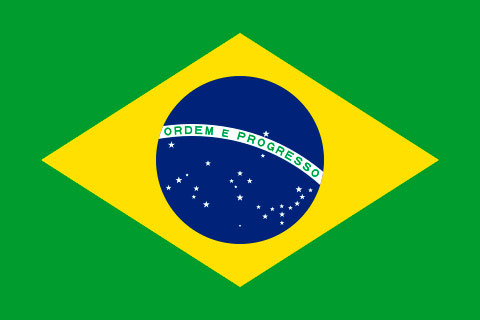A
B
C
D
E
F
G
I
J
K
L
M
N
O
P
R
S
T
U
V

people
As of July 1, 2025 the population (permanent residents) Rio de Janeiro is 6 688 927 people, including children under the age of 6 - 672 237 people, teenagers (schoolchildren) aged 7 to 17 years - 785 949 people, young people from 18 to 29 years old - 806 016 people, adults aged 30 to 60 years - 2 872 894 people, elderly people over 60 years old - 1 257 518 people, and the centenarians Rio de Janeiro over 80 years old - 294 313 people.
| Children under 6 years old | 672 237 / 10.05% |
| Teenagers from 7 to 17 | 785 949 / 11.75% |
| Young people from 18 to 29 | 806 016 / 12.05% |
| Adults from 30 to 59 | 2 872 894 / 42.95% |
| Elderly over 60 | 1 257 518 / 18.8% |
| Centenarians over 80 | 294 313 / 4.4% |
Total Rio de Janeiro permanent residents 2 959 850 men (44.25%) and 3 729 077 women (55.75%).
| Age | Men | Women | Percentage of women |
| 0 – 4 | 191 303 / 6% | 153 043 / 5.7% | 47.4% |
| 5 – 9 | 191 303 / 6% | 150 100 / 5.6% | 47.2% |
| 10 - 14 | 170 701 / 5.3% | 135 384 / 5.1% | 47.2% |
| 15 - 19 | 144 213 / 4.4% | 117 726 / 4.5% | 47.7% |
| 20 - 24 | 170 701 / 5.3% | 141 271 / 5.3% | 48.7% |
| 25 - 29 | 253 108 / 8.1% | 211 906 / 7.7% | 48.6% |
| 30 - 34 | 247 222 / 7.9% | 211 906 / 7.7% | 49.1% |
| 35 - 39 | 226 620 / 7.2% | 206 019 / 7.5% | 50.8% |
| 40 - 44 | 208 962 / 6.6% | 194 247 / 7.1% | 51.2% |
| 45 - 49 | 191 303 / 6% | 179 531 / 6.6% | 51.5% |
| 50 - 54 | 217 791 / 6.9% | 217 792 / 7.9% | 53.3% |
| 55 - 59 | 229 563 / 7.3% | 250 166 / 9% | 55.2% |
| 60 - 64 | 191 303 / 6% | 223 678 / 8.1% | 57% |
| 65 - 69 | 132 440 / 4% | 176 588 / 6.5% | 60.1% |
| 70 - 74 | 55 919 / 1.4% | 94 181 / 3.7% | 65.5% |
| 75 - 79 | 70 635 / 1.9% | 147 157 / 5.5% | 69.7% |
| 80+ | 50 033 / 1.2% | 132 441 / 5% | 74.9% |
Education level of residents Rio de Janeiro: have higher education 22.6% (1 511 698 people), incomplete higher education — 3% (200 668 people), secondary vocational — 35.6% (2 381 258 people), 11 classes — 15.6% (1 043 473 people), 9 classes — 8.6% (575 248 people), 5 classes — 8.3% (555 181 people), have no education — 0.3% (20 067 people), illiterate — 0.7% (46 822 people).
| Higher education | 1 511 698 / 22.6% |
| Incomplete higher | 200 668 / 3% |
| Secondary vocational | 2 381 258 / 35.6% |
| Elementary school | 1 043 473 / 15.6% |
| Middle school | 575 248 / 8.6% |
| High school | 555 181 / 8.3% |
| Without education | 20 067 / 0.3% |
| Illiterate | 46 822 / 0.7% |
Total Rio de Janeiro the number of officially employed population is 3 913 022 people (58.5%), pensioners 1 806 010 people (27%), a officially registered and registered unemployed 769 227 people (11.5%).
| Employed population | 3 913 022 / 58.5% |
| Unemployed | 769 227 / 11.5% |
| Pensioners | 1 806 010 / 27% |
Total Rio de Janeiro have a disability 664 210 people, what constitutes 9.93% from the entire population. Disabled of the group I are 105 016 (1.57.%), disabled of the group II are 255 517 (3.82.%), disabled of the group III are 245 484 (3.67.%), disabled children 58 194 (0.87.%).
| Total disabled | 664 210 / 9.93% |
| Disabled of the group I | 105 016 / 1.57% |
| Disabled of the group II | 255 517 / 3.82% |
| Disabled of the group III | 245 484 / 3.67% |
| Disabled children | 58 194 / 0.87% |